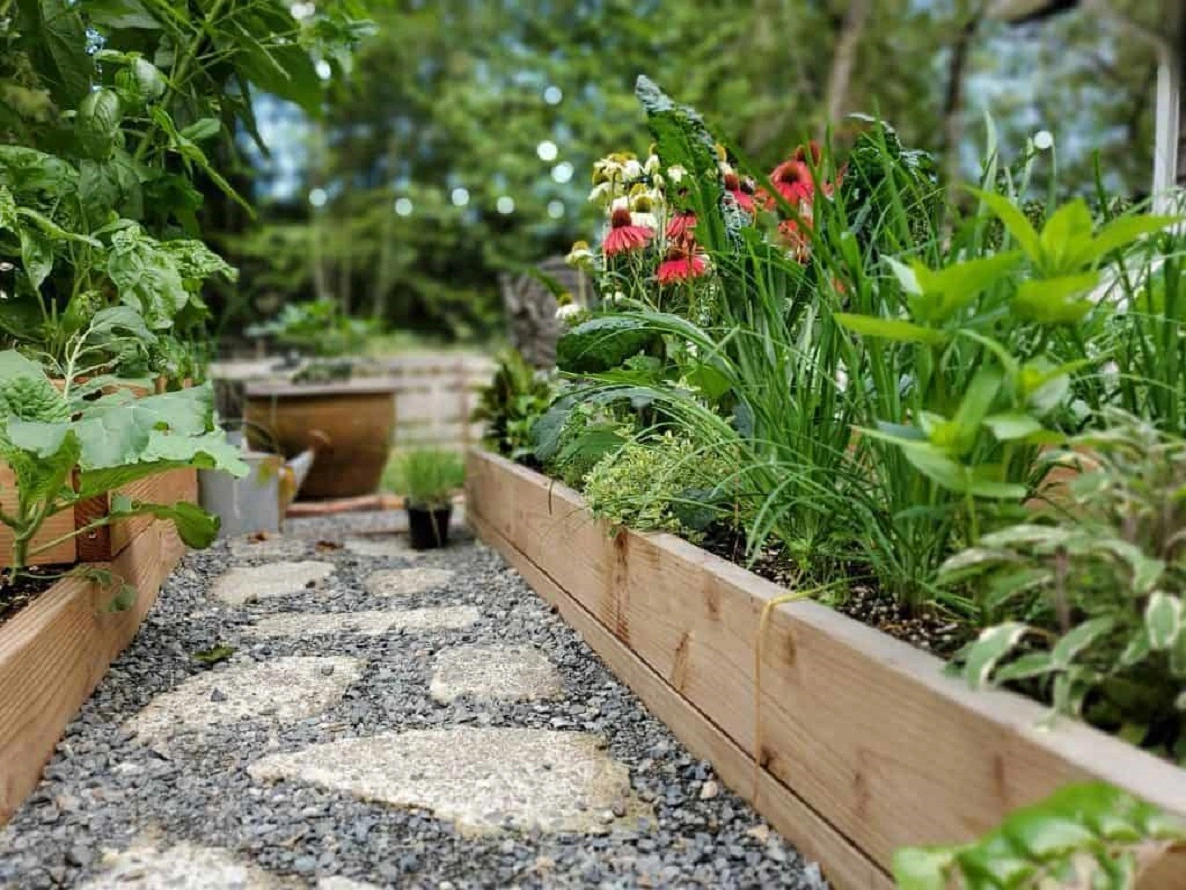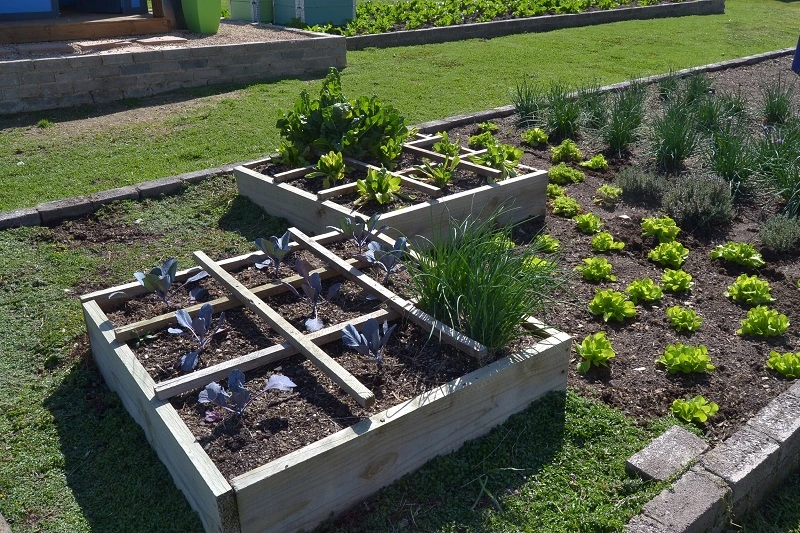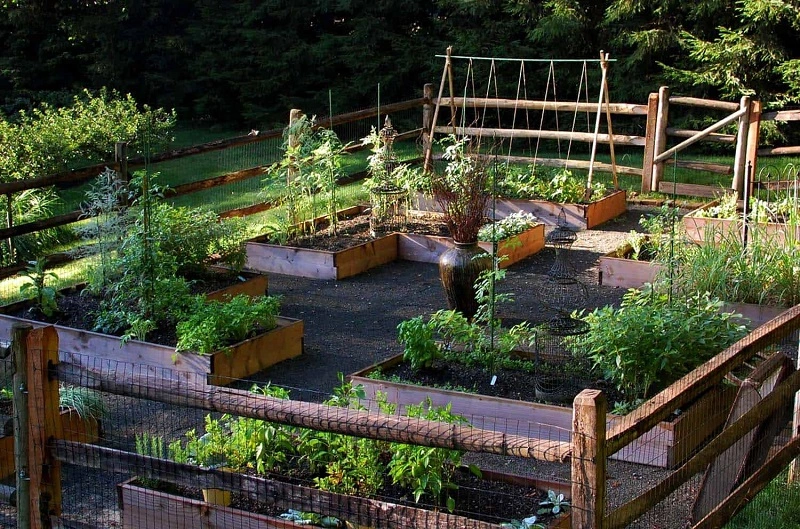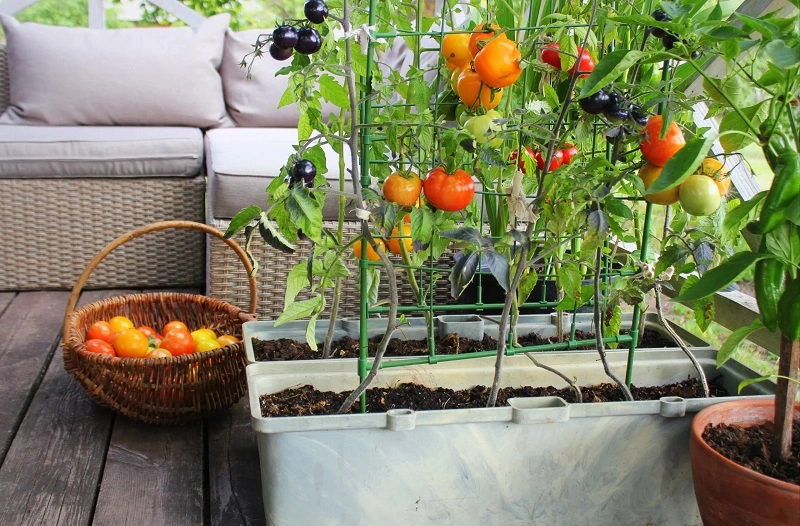4 Vegetable Garden Ideas - Learn How to Start a Vegetable Garden
Do you have some space in your yard? You really should consider growing your own vegetables. Thanks to this, you can be sure the food you eat is free from harmful fertilizers and other toxic substances. There are many ideas on how to start a vegetable garden. What to pick – a traditional in-ground garden, or a raised vegetable garden? Check the most interesting ideas.

Why is a vegetable garden worth having?
A vegetable garden brings many benefits. If you decide to grow your own crops, you can be sure the vegetables and fruits you harvest are healthy. You lack such certainty when shopping in supermarkets, where typical produce has been sprayed with various chemicals.
Organic vegetables, fruits, and herbs from your own garden are particularly beneficial if you have small children, and want to know what they eat. Plus, such food simply tastes better.
Here’s an additional advantage of having a small vegetable garden – more daily exercise. The crops need weeding and watering, and thanks to this, you can work on your beautiful shape.

Can you grow a vegetable garden in any yard?
You can start a vegetable garden in any yard – regardless of its size. The number of vegetables or herbs grown in it is the only limitation. The larger the property, the more possibilities about the plants you can have.
But as it turns out, even too little space in a yard, or the lack of it is not a problem at all. More and more people decide to start a vegetable garden on a balcony or a patio.
Vegetable gardening for beginners
Those who have never grown any vegetables should start from easier crops. Are you wondering which plants are the best, in this case? Take a look at these:
- lettuce,
- radish,
- zucchini,
- dill,
- chives,
- parsley,
- green beans,
- pumpkins,
- carrots.
After you gain a minimal experience, you can decide to grow vegetables such as cucumbers, tomatoes, or arugula. Although not very demanding, they require some time and proper care.

What’s more, you can expand your vegetable garden and add some fruits to it. Although many people claim they are more difficult to grow, you can try picking less demanding species. Here are some good suggestions:
- redcurrant,
- gooseberry,
- grapevine,
- raspberry.
Vegetable garden – companion plants
When starting a vegetable garden, make sure to follow certain rules about how to distribute certain species. Why is it so important? Because some plants might hinder each other’s growth when planted next to each other. Likewise, others have a positive influence on the mutual development. But it’s not always as simple as it seems. Take a look at the tips below and learn how to group various vegetables.
- Plant carrots and onions in adjacent rows – thanks to this, you can protect them from pests.
- Tomatoes and cabbage planted together fight off attacking insects.
- To protect green beans or peas, plant some corn nearby.
Garlic is a perfect example of a vegetable that can be planted next to any species. It effectively repels most pests. Basil and mint planted in between crops enhance flavor of the vegetables.

Here are some other popular companion plant combinations in a vegetable garden:
- celeriac, cabbage and beetroots,
- tomatoes and parsley,
- carrots and lettuce,
- cucumbers and dill,
- green beans and pumpkins.
Some vegetables cannot be grown next to each other. For instance, never plant tomatoes and peas, or cucumbers and potatoes together. Other forbidden vegetable pairs include:
- beans and onions,
- potatoes and tomatoes,
- tomatoes and fennel,
- green beans and peas.
A small vegetable garden for beginners
Are you just beginning your adventure with vegetable gardening? To find out whether it’s something for you – start from a mini vegetable garden. You don’t need anything excessive. Just 3-4 rows with the easiest vegetables is more than enough.
As an advantage, such a miniature vegetable garden requires little work, and can be designed on any – even the tiniest property. It’s a perfect solution if you live in an apartment with a small yard. One can turn an area of 1 m² (ca. 10 sq ft) into a tiny vegetable garden.

A modern vegetable garden
There are as many vegetable garden ideas as gardeners themselves. Modern solutions are becoming an increasingly popular elements in many house yards. There’s nothing weird about it. Everyone wants their garden to fit the general looks of the building or other landscape elements.
You can design a modern vegetable garden in many ways. Mini greenhouses are an interesting solution. Such tiny buildings provide perfect conditions for plants to grow – so you can decide on more demanding vegetables and fruits. What’s more, such constructions look really fascinating and make perfect yard decorations.
As for small yards, using pallets with long plant boxes placed on top is a very modern solution. Not all vegetables can be grown in such conditions, but herbs might be a perfect choice.

A raised vegetable garden in boxes
It’s a perfect solution especially for those who don’t have a yard, but can sacrifice some space on a patio or a balcony. As for the boxes, you can make them or purchase some in a gardening center. There is a huge variety of such products, so everyone should find something ideal for their needs.
Such raised beds are suitable not only for herbs, as some might think. They are great for many types of vegetables. You can use them to plant potatoes, tomatoes, lettuce, leeks. If the box is large enough, you can also plant beetroots or zucchini in them.

A small vegetable garden on a balcony
As for balcony vegetable gardens, vertical constructions are the current trend. It’s simply a multi-level rack. Each level can contain different vegetables, fruits, or herbs. Such racks are available in different sizes, which makes them perfect even for very small balconies. What’s more, some people who don’t have a balcony, decide to place such racks indoors, if the space in e.g., the kitchen allows it.

📍 How to separate a vegetable garden from the rest of the yard?
You don't have to completely separate your vegetable garden – but if you want to do it regardless, there are a few methods. One of them involves using a wooden fence – its height is a matter of preference. A mesh is another option. Many people use shrubs in a form of a hedge to divide various yard sections.
📍 How to make a vegetable garden?
A vegetable garden can be made in various ways – depending on your individual concept. Classic rows with vegetables and fruits are a good idea. A greenhouse is another option. You can also start a vegetable garden in special boxes.
📍 When to plant vegetable in a vegetable garden?
Most vegetables are sown or planted in spring – some as early as March (mainly root vegetables). Other edible plants have to wait until May or June. That's when you can sow zucchini and cucumbers, or plant cauliflowers.
📍 How to design a vegetable garden layout?
A vegetable garden layout is not as easy to plan as it seems. First, you need to determine the area where it's going to be. Also, you have to think what vegetables you want to grow, as not all of them can be planted together. Creating a vegetable garden is a logistic process. Make sure to follow some tips from experts.
Featured articles




